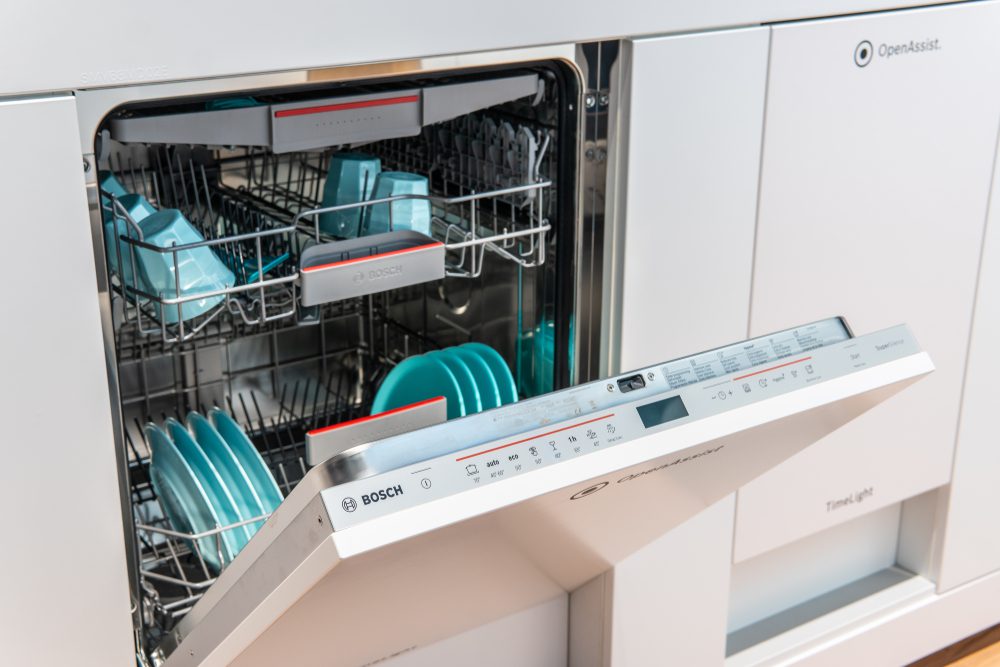Do you know how to fertilize your pothos plants? Fertilizing your pothos is crucial for their growth and health. This guide will teach you how to apply the right type of fertilizers to your pothos, when to do it, and what to watch for when fertilizing them.
Here Is Why Pothos Plants Need Fertilizer:
Pothos plants need a balanced mix of nutrients to grow. Fertilizer will help them grow faster and stronger with less effort. Without fertilizer, many pothos plants would die from a lack of nutrients and their stems would never get tall enough for them to be successful.

Why Is Fertilizing Pothos Plants Important?
Pothos plants need fertilization to help them grow faster and produce more leaves. Fertilization provides the plant with the nutrients it needs to grow and survive. Without fertilization, pothos plants will not grow as fast or as healthy.
Fertilizers are not as food for plants, and are instead necessary for them to grow. Pothos plants can produce their own food, but need additional nutrients to do so.
Pothos plants are similar to humans in that they need a wide range of nutrients to stay healthy.
When Should You Fertilize Your Pothos?
It is best to fertilize pothos plants during the spring and summer growing seasons. Fertilizing in the cooler months can stress the plant, so you should avoid this in the fall and winter. However, you can fertilize toward the end of winter, which can give your plants an early spring boost.
Pothos plants require different fertilizing schedules depending on the season. Use a higher concentration of NPK and micronutrients during the spring and summer months will help your plants grow better.
How to Fertilize Pothos Plants?
Pothos plants are easy to fertilize—just follow a few simple steps.
First, choose an appropriate fertilizer and prepare half the standard dose.
Next, mix the fertilizer into a gallon of water and use this water to water your pothos plant.
Finally, make sure you water the plant before and after fertilizing.
By following these steps, you’ll ensure that your pothos plant gets the nutrients it needs to thrive.
How Do You Fertilize Pothos in Water?
To feed pothos plants in water, mix a liquid fertilizer with water and use 1/4 teaspoon per gallon of water once a month. Avoid using too much fertilizer, and only fertilize during the plant’s growing season. Doing this will help boost your pothos growth.
How Much Fertilizer Does a Pothos Need?
Pothos plants can be fertilized with either liquid or compost fertilizer. However, only half the recommended dose is necessary. Be sure to water the plant thoroughly afterwards to distribute the nutrients evenly. Over-fertilizing can burn the roots of your pothos and cause the leaves to yellow.
Apply the fertilizer to the soil around the base of the plant, taking care to avoid getting any on the leaves.
How Often to Fertilize Pothos Plants?
Pothos plants should be fertilized every 4-6 weeks during the growing season. However, it is important to avoid fertilizing them in the fall and winter.
You should add fertilizers that dissolve in water to your pothos plants when you water them regularly.
Since plants grow more slowly indoors, you should only use fertilizer once a month at a lower strength. But you should never put the fertilizer on more often than what the package says.
Fertilizer in the Spring/Summer
Fertilize pothos plants around once a month during the growing season in spring. The best fertilizer to use depends on the plant’s needs, but a general-purpose fertilizer should work well. In winter, when the plants are dormant, fertilize them less often to avoid stressing them out.
Fertilizer in the Fall
Fertilizing them in the fall can actually damage them. So, it’s best to fertilize your pothos plant once every 2 months in the fall, and then not at all during the late fall.
Fertilizer in the Winter
You should not fertilize pothos plants during the winter months as this can cause them to overgrow. Overfeeding your pothos during winter will kill it. Fertilizing pothos plants in winter is not effective if done incorrectly.
What Are the Preparations Before Fertilizing Pothos Plants?
1. Research the Plant’s Fertilizer Needs
Different plants have different fertilizer needs, so it is important to do some research on the specific plant before purchasing fertilizer.
Fertilizers come in different concentrations, so be sure to choose one that is appropriate for the plant you are fertilizing.
Ensure that you are providing your plants with the nutrients they need without causing any damage.
2. Choose Fertilizer Based on the Plant’s Needs
The N-P-K ratio is important when choosing fertilizer for a pothos plant, as the wrong proportions can kill the plant. The pH and nutrient uptake levels are also crucial when choosing fertilizer.
The liquid or granule form is mostly a personal preference, but can impact how often you need to apply the fertilizer.
Another option is to use an organic fertilizer, which will release small amounts of nutrients during watering.
3. Apply the fertilizer According to the Manufacturer’s Instructions
Applying fertilizer to a pothos plant is a simple process. First, dilute the fertilizer according to the manufacturer’s instructions. Next, pour the diluted fertilizer directly into the pot or mix it with water. Finally, apply the fertilizer according to the manufacturer’s instructions.
4. Keep an Eye Out for Signs of Over- or Under-Fertilization.
Pothos plants need to be fertilized regularly, but it is important not to over-fertilize them. Over-fertilization can cause yellow and brown spots on leaves, stunted growth, leaf burn, and excess build-up of fertilizer on topsoil.
These problems may not show up immediately, as it takes a few days for the plant to show signs of stress. It is always best to err on the side of using less fertilizer than more, as using too much can do more harm than good.
If your pothos plant is dying, look for signs of root and leaf damage, excess fertilizer build-up, and water thoroughly to leach away any leftover fertilizer.
If the soil doesn’t look healthy, you may need to repot your pothos.
Stop fertilizing the plant for 6-8 weeks to allow the damaged leaves to recover.
Save the remaining plants and provide them with appropriate care, so they can thrive.
5: Adjust the Fertilizer Application as Needed
Pothos plants need fertilizer every 15 days during their growing season, which is from May to October. Dilution of the fertilizer in water and applied directly to the ground around the plant.
The NPK concentration of the fertilizer should be like that of green plants. You can use commercial fertilizers or earthworm humus to increase nutrient doses.
Stop fertilizing in the fall and winter, and resume in the spring.
What Are The Signs That Your Pothos Is Lacking Nutrients?
Pothos plants need fertilizer to grow properly. Without enough nutrients, they may suffer stunted growth, yellowing leaves, and leaf drop. If you see any of these signs, your pothos plant may be lacking in nutrients and could benefit from fertilizing.
The first is that the leaves may start to yellow or turn brown.
They may also be limp and brittle, with stems that break easily.
Another sign is that the leaves may start to curl or droop.
Finally, the plant may start to produce fewer leaves.
What Nutrients Do Fertilizers Have That Are Good for Pothos?
Fertilizers for pothos plants contain micronutrients and macronutrients. Macronutrients are the nutrients that plants need the most and include nitrogen, phosphorus, potassium, carbon, hydrogen, oxygen, and calcium. These are essential for plant growth and development for pothos plants.
Fertilizers also have micronutrients like iron, zinc, copper, and boron in addition to these macronutrients. Even though these micronutrients are found in small amounts, they are still necessary for plants to grow well.
All fertilizers include nitrogen, phosphorus, and potassium as their primary ingredients.
What Type of Fertilizer for Pothos?
Pothos plants need a balanced fertilizer for the best growth. Liquid fertilizers are popular because they absorb quickly, but you need to dilute them before using them. Pellet-based fertilizers are slow-release and ideal for the pothos. Granular fertilizers are not the best for this plant.
Liquid fertilizers
Liquid fertilizers are popular for pothos plants because they absorb them quickly. They are available in different concentrations, so you can dilute them to a specific dose.
Pothos need a lower dose of fertilizer than other plants. Therefore, liquid fertilizers are not suitable for the pothos because you cannot control the concentration of nutrients.
Granular Fertilizers
A granular fertilizer is a good option for outdoor plants, but not for the pothos.
Granular fertilizer is pellet-based and mixed with the potting soil or directly added to the pot. Granular fertilizer can release all its nutrients in one go, which can lead to fertilization burn in your plant.
Slow-Release Fertilizers
Slow-release fertilizers are a type of fertilizer that is designed to slowly release nutrients over a period of time. This is beneficial for pothos plants because it allows them to get the nutrients they need without being overloaded all at once, which can lead to fertilization burn.
Pellet-based fertilizers are the best type of slow-release fertilizer for pothos plants.
What Are the Best Fertilizers for Pothos Plants?
Pothos plants need a balanced fertilizer with 10-10-10 or 20-20-20 ratios in order to grow well. Nitrogen, phosphorus, and potassium are all essential nutrients for pothos plants, and a balanced fertilizer will provide the right proportions of each.
It’s important to choose the right fertilizer for your plants, as different types of plants need different fertilizers for healthy growth.
Nitrogen is essential for photosynthesis, leaf growth, flowering and fruiting, while phosphorus encourages root growth, fights off disease and makes plants more resilient.
1. Neptune’s Harvest Fish & Seaweed Fertilizer 2-3-1
Neptune’s Harvest Fish & Seaweed Fertilizer 2-3-1 is an organic, liquid concentrate fertilizer that helps people use it to improve the growth of pothos plants as well as poor soil. The system that includes fish and seaweed fertilizer is a two-part system. You can also use it to fertilize plants, trees, and flowers.
2. Miracle-Gro Indoor Plant Food Spikes 6-12-6
Features
The Miracle-Gro Indoor Plant Food Spikes are a great way to provide your plants with the nutrients they need. The spikes are easy to use and you can place easily in any area of the home. The quality ingredients in the spikes will help your plants flourish.
Miracle-Gro has ensured that the manufacturer made these spikes with quality ingredients so that you can trust them to provide your plants with the nutrition they need.
This product comes in packs of 6 per box, so you’ll have plenty of supplies on hand to give your plants the care they need.
All you have to do is fertilize your plants when they need it, and forget about it – Miracle-Gro has got everything else covered for you!
Pros
- It provides in-depth information on why, when, and how you need to fertilize Pothos plants.
- It helps increase the growth rate of your plants.
Cons
- Not convenient: The Miracle-Gro Indoor Plant Food Spikes 6-12-6 are not very convenient because they require you to insert the required number of sticks into the product, then sit back and enjoy your plants.
- Messy: The Miracle-Gro Indoor Plant Food Spikes 6-12-6 are messy and require a lot of effort to use.
3. Jobe’s Indoor Houseplant Fertilizer Spikes 13-4-5
Features
These slow-release spikes deliver high levels of nitrogen, potassium, sulfur, magnesium, and calcium to your plants in a way that’s gentle on their roots.
This fertilizer spike is great for use with both indoor and outdoor plants – making it the perfect choice if you know your soil is depleted but don’t want to re-pot your plant.
The 13-4-5 ratio ensures that each dose of this fertilizer is packed with nutrients vital to plant growth.
Simply press this fertilizer spike into the soil until it is completely covered. Follow the dose instructions to prevent root damage and possible fertilizer burn.
Jobe’s Indoor Houseplant Fertilizer Spikes are available in packs of 6 or 12 spikes, and are made in the USA!
Pros
- High nitrogen results in brilliant green leaves: Jobe’s Indoor Houseplant Fertilizer Spikes 13-4-5 provides high levels of nitrogen, which will result in brilliant green leaves.
- Can help to adjust soil deficiencies: Jobe’s Indoor Houseplant Fertilizer Spikes 13-4-5 can help to adjust soil deficiencies.
- Slow release fertilization spikes for long term use: One of the benefits of this fertilizer spike is that it has a slow release formula, meaning that it will last longer than other fertilizers on the market and won’t need to be re-applied as frequently.
- Convenient mess-free fertilizing care: Miracle Gro Indoor Plant Food spikes 6-12-6 are convenient and mess-free, making them ideal for those who want easy care for their houseplants.
- It is easy to use: simply insert the required number of sticks then sit back and enjoy your plants.
- The fertilizer spikes are effective: 13-4-5 fertilizer spikes are effective for indoor plants.
- It is affordable: 3 Jobe’s Indoor Houseplant Fertilizer Spikes 13-4-5 is affordable.
Cons
- Can cause root burn: If used incorrectly, this fertilizer spike can cause root burn.
- High nitrogen ratio: The high nitrogen ratio can result in brilliant green leaves, but it may also damage the plant’s roots.
- Difficult to measure: It is difficult to measure the amount of fertilizer needed as the sticks are not marked.
- Not user-friendly: The packaging is not user-friendly, and it is difficult to find information about the product online.
- Difficulty in using: The fertilizer spikes are hard to use, and they do not stay together well.
4. Miracle-Gro Indoor Plant Food (Liquid) 1-1-1
Features
This 1-1-1 ratio is perfect for the health of a pothos and won’t over-fertilize your valuable plant (if done right).
This fertilizer has a balanced ratio, and it’s not essential that you dilute it. I recommend diluting it to half strength. Pothos plants, on the other hand, are more prone to fertilizer burn than other houseplants.
4 pumps per quart of water is a good starting point. Apply as part of your snake plant’s normal watering routine. Small pots require one fertilizer pump, while medium plants require two.
Miracle-Gro Indoor Plant Food Spikes 6-12-6 can be applied as often as once per week, making it convenient and mess-free for your houseplant’s needs!
Pros
- Easy to use: The Miracle-Gro Indoor Plant Food Liquid formula is easy to use, and it’s packaged in a pump bottle for easy measuring.
- Safe for snake plants: A balanced nutrient profile is safe for snake plants, and the 1-1-1 ratio will not over-fertilize your plant.
- Balanced nutrient profile: The Miracle-Gro Indoor Plant Food Liquid has a balanced nutrient profile that will not harm your house plants.
- Can be applied as often as once per week: You can apply this fertilizer as often as once per week without risking overfertilization of your plant.
- Convenient: Miracle-Gro Indoor Plant Food (Liquid) 1-1-1 is convenient and mess-free.
- Mess free: Miracle-Gro Indoor Plant Food (Liquid) 1-1-1 does not require you to mix with water or soil.
- Provides consistent plant food levels: Keep your plants fed with a regular dose of Miracle Gro Indoor Plant Food (Liquid).
- Keeps your plants healthy and hydrated: Contains nutrients that help keep your plants healthy and hydrated..
- Simply insert the required number of sticks: This makes Miracle-Gro Indoor Plant Food (Liquid) 1-1-1 easy to use.
- Check Price: The price is affordable and you can save money by purchasing in bulk.
- Plants will grow: Miracle-Gro Indoor Plant Food (Liquid) 1-1-1 will help your plants grow, healthier and stronger.
Cons
- Requires frequent feeding: This Miracle-Gro Indoor Plant Food Liquid formula requires frequent feeding, as it is not meant to be used as a long-term solution.
- Requires dilution: You must dilute this Miracle-Gro Indoor Plant Food Liquid formula before using it, as pothos plants are more prone to fertilizer burn.
- Balanced nutrient profile: Although the 1-1-1 ratio is perfect for snake plants, other houseplants may need different ratios depending on their needs.
- Snake plant fertilization tip: For a quick and easy way to fertilize your snake plant, mix 4 pumps of this liquid fertilizer per quart of water and apply as part of your regular watering routine.
- Spikes: Miracle-Gro Indoor Plant Food comes in a liquid form, which can cause spikes in your plants’ nutrient levels.
- Convenient but messy: Miracle-Gro Indoor Plant Food is convenient, but it can be messy to apply because of the liquid form.
- Can cause spikes in plant nutrients: Miracle-Gro Indoor Plant food comes with the potential to spike your plants’ nutrient levels, which may not be desirable for some people.
- A lot of waste: the number of sticks that you need to use is a lot, and there is a lot of waste.
- Not very environmentally friendly: Miracle-Gro Indoor Plant Food (Liquid) 1-1-1 does not seem very environmentally friendly because it uses lots of sticks.
Can I Make Homemade Fertilizer for Pothos?
Yes, you can make fertilizer for your pothos plant. However, it is healthier than using store-bought fertilizers because it is made with natural ingredients that are readily available to you and will not harm your plants.
If you want to make homemade fertilizers for your pothos. Below is some ways for you.
1. Compost As Fertilizer for Pothos
Compost is a great way to fertilize plants with natural and organic materials. It is made by breaking down organic matter, such as leaves and food scraps, into a nutrient-rich soil amendment.
To make compost, you will need:
-A bin or pile in which to compost (a simple wire mesh bin will do)
-Organic Matter to Compost (Leaves, Grass Clippings, Fruit and Vegetable Scraps)
– Water
-Time
To start your compost bin, layer organic matter in it alternately with water. The organic matter should be about twice as high as the water. Over time, the organic matter will break down and turn into nutrient-rich compost that can be used to fertilize plants.
2. Tea with Eggshells
Eggshell tea is a simple fertilizer that you can make at home to provide your pothos plants with a calcium boost. To make eggshell tea, simply steep crushed eggshells in boiling water for about 10 minutes.
Once the eggshells have steeped, allow the tea to cool and then use it to water your pothos plants. Eggshell tea can be used once or twice a month as needed.
3. Aquarium Water
Aquarium water is an excellent source of nutrients for pothos plants. To make a homemade fertilizer, simply mix aquarium water with water at a 1:1 ratio and use it to water your pothos plants once every 1-2 weeks. The aquarium water will provide essential elements that will promote healthy growth in your plants.
4. Cooking Water for Potatoes or Rice
Cooking water from potatoes or rice can be used to make fertilizer. Simply let the water cool down before using it, and then water your pothos plant with it. The nutrients in the cooking water will help your pothos grow quickly and lushly.
5. Gelatin
Pothos plants can be fertilized with gelatin. Gelatin is a good source of nitrogen and can be used to fertilize pothos. Gelatin needs to be dissolved in hot water before being applied to the soil, and banana peels can also be added for extra nutrients.
It takes time for gelatin to work its magic, so apply it regularly!
6. Green Tea
To make green tea fertilizer for pothos, add one teabag to one gallon of water and use it on pothos every 3-4 weeks for best results.
7. Epsom Salt
Epsom salt can be used as a homemade fertilizer for pothos. This is because it helps in the development of chlorophyll and the growth of pothos.
Epsom salt is “hydrated magnesium sulfate” and is made up of 10 percent magnesium and 13 percent sulfur. Mixing 1-2 tablespoons of Epsom salt in one gallon of water can create a foliar spray that can be used on pothos.
8. Make Your Own Foliar Spray with Dried Banana Peels
Bananas are an excellent source of potassium, which is essential for plant growth. To make a homemade banana fertilizer, simply dry banana peels and mix them with other ingredients to create fertilizer solution.
There are many recipes available online for homemade banana fertilizer, so find one that works best for you and your plants!
What Are Natural Fertilizers for Pothos Plants?
Natural fertilizers for the pothos are organic compounds like compost or banana peels. You can also use aquarium water, rice or potato cooking water, or gelatin as a nitrogen source. Green tea is a good fertilizer for pothos plants because it contains phosphorus, magnesium, potassium, and calcium.
Be sure to dilute any fertilizer you use before applying it to your plants.
What Happens If You Over-Fertilize Your Pothos?
Overfertilizing your pothos can lead to a number of negative consequences, including slow growth, brown tips on leaves, and yellow and brown spots on leaves. Overfertilization occurs when too much fertilizer is used, the effects are not seen quickly enough, or the dose is adjusted too slowly.
How to Fix an Over-Fertilized Pothos?
To fix the problem, look for signs of root and leaf damage, such as brown and burnt leaves. Clip these leaves away, leaving only green foliage. Water the plant thoroughly to leech away any leftover fertilizer. If the soil looks bad, repot the plant.
FAQs
What Are the Best Fertilizer Options for Pothos Plants?
We recommend Agro Thrive All-Purpose Organic Liquid Fertilizer because it is made with 100% natural ingredients and has the best NPK formula.
You could also use Miracle-Gro fertilizer, which is designed to activate your soil’s micro-flora and contains about 70% fast-release nutrients. It is easy to use and has a low concentration, balanced NPK ratio.
What Are the Signs that a Pothos Plant Needs Fertilizer?
Pothos plants are very easy to care for and are very tolerant of neglect. However, they will benefit from being fertilized on a regular basis. There are a few signs that your pothos plants may need fertilizer:
- The leaves of the plant are starting to turn yellow or pale.
- The plant is not growing as vigorously as it used to.
- The leaves of the plant are starting to develop brown spots.
What Is the Best Way to Apply Fertilizer to a Pothos Plant?
Pothos plants are typically easy to care for, and fertilizing them is no exception. You can add water-soluble fertilizer to the watering can and apply it as normal. Slow-release fertilizers are also an option, which can be handy if you forget to fertilize regularly.
You can use fertilizer spikes to apply fertilizer directly to the soil, which is helpful if you have trouble getting the fertilizer evenly mixed in with the soil.
When choosing fertilizer for pothos plants, be sure to check the NPK values. Many commercial fertilizers have higher nitrogen values than pothos plants need. A balanced fertilizer with an NPK value of 10-10-10 or 20-20-20 is a good choice.
What Are the Benefits of Fertilizing a Pothos Plant?
Fertilizing helps to shorten the time it takes for your plant to flourish and flower, which can vary depending on the type of pothos plant that is being grown. It also helps to keep your plant healthy, spurring new growth regardless of the season or temperature changes in the area.
What Are Common Mistakes When Fertilizing Pothos Plants?
Pothos plants are a type of houseplant that is very popular. They are easy to care for and can tolerate a range of conditions. However, there are some common mistakes that people make when fertilizing pothos plants.
One mistake is not checking to see if the plant is actually a pothos before fertilizing. Pothos plants are usually easy to identify, but sometimes people may confuse them with other types of plants. Fertilizing the wrong plant can harm it.
Another mistake is over-fertilization. Over-fertilization can cause yellow and brown spots on leaves, stunted growth, leaf burn, and a build-up of fertilizer on topsoil. If your pothos plant is not growing well even with regular care, it may be over-fertilized.
It takes 2-3 days for the plant to show signs of being over-fertilized. To avoid over-fertilizing, use half the regular dose of fertilizer recommended for pothos plants.
What Are Some Tips for Fertilizing Pothos Plants?
Pothos plants are easy to fertilize and only require fertilization every 15 days from May to October. The dose for fertilizing pothos plants is 10 ml per 10 liters of water.
In early spring, you can use a number of commercial fertilizers or add more nutrients with organic fertilizers.
Earthworm humus is also useful for fertilizing pothos plants. To apply, simply add it directly to the ground or dilute it in water first.
Stop fertilizing during the colder months and resume once growth resumes.
Can You Fertilize Pothos in Winter?
It should not fertilize pothos plants during the winter months. This is because the plant enters a state similar to hibernation and is unable to use the fertilizer as effectively as it would during the growing season. Overfeeding your plants during the winter may cause them to die.
What Fertilizers to Use for Pothos in Water?
If you are growing pothos plants in water, you will need to use fertilizer that is designed for plants that are grown in water. Just like pothos plants potted in soil, it’s important to allow dormancy and stop fertilizing in cold months.
Another type of fertilizer that you can use for the pothos is fish emulsion fertilizer. This type of fertilizer is made from fish waste and is a great source of nutrients for plants.
Do Pothos Like Coffee Grounds?
You can use coffee grounds to fertilize pothos plants, but only in moderation. Coffee grounds contain nitrogen and phosphorous, which are beneficial to plants. However, they are a popular alternative to traditional fertilizers, and you should only use them in moderation due to their high nitrogen content.
Try mixing some coffee grounds into the water or soil of your plant if you suspect it is nitrogen deficient.
Are Eggshells Good for Pothos?
You can use eggshells as fertilizer for pothos plants, which need extra calcium. They are high in calcium, which can help to build up soil nutrients and improve drainage and aeration. Adding eggshells to the potting soil of your pothos will help to ensure that it gets the nutrients it needs to thrive.
Is Epsom Salt Beneficial to Pothos?
Epsom salt is beneficial for plants, including pothos plants. It is affordable and you can find it almost anywhere. Epsom salt helps to improve the absorption of other nutrients as well as strengthen plant cell walls. This product makes it an ideal solution for reducing brown spots on pothos plants.
Is Osmocote Good for Pothos?
Osmocote is a slow-release fertilizer that is beneficial for the pothos. You can apply once during the growing season is all that is needed for several months of protection. It’s an effective combination of nitrogen, phosphorus, and potassium that encourages lush plant growth. Use a slow-release fertilizer to avoid overfertilizing your plants.
Be cautious and use less fertilizer than you think is necessary, as too much can burn your plant’s roots.
Can I Use Orchid Fertilizer on Pothos?
You cannot use orchid fertilizer on the pothos, as this can damage the plants. Orchid fertilizer contains specific nutrients necessary for the growth of these plants, and you should only use in moderation.
What Types of Fertilizers to Avoid?
It is best to avoid using coffee grounds, urea, and compost tea as fertilizers for pothos plants. Coffee grounds can change the pH of the soil rapidly, which may not be ideal for pothos plants. Urea is high in nitrogen, which can be harmful to pothos plants.
Compost tea is also not recommended because it is difficult to brew and may not be as effective as other fertilizers.
Final Thoughts
Pothos plants are easy to care for and don’t require much fertilizer. However, if you want your pothos to thrive, it’s important to use the right type of fertilizer and to apply it at the right time. With a little care, your pothos will be healthy and beautiful.









